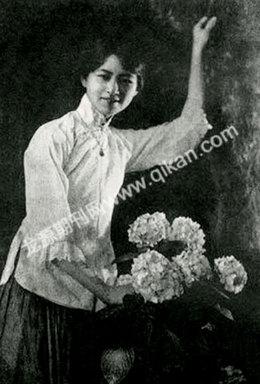Anecdotes

Mischievous Imp
Liang Sicheng (1901-1972) was a prominent architect in the 20th-century China. In his youth he studied architecture at the University of Pennsylvania. When he was supposed to make a design, he decided upon an imitation bronze mirror for his wife Lin Huiyin. The mirror was made of a modern piece of mirror embedded in a bronze frame in an ancient style. The bronze mirror carried images of two flying deities encircled by a curling pattern. Inside the circling pattern was an inscription that said his admiration for his wifes beauty. Lin Huiyin commented that the mirror was a perfect imitation.
So Liang took the mirror to a professor specialized in oriental art at the department of art, asking the professor to see how old the mirror was. Without any knowledge of the Chinese language, the professor was puzzled by the modern materials and ancient design. Then Liang revealed that he had made the mirror. The professor laughed, saying, “Hey! Mischievous imp!”
2+5=10000
Wen Yiduo (1899-1946), a leading poet of the early 20th-century China, started a class with a math question he scribbled on the blackboard: “2+5=?” Students gave the simple answer in chorus. Wen confirmed the answer, saying that 7 was the correct answer in mathematics, but in art, the answer could be 10,000. To justify his answer, Wen showed students a picture by Xu Beihong, a preeminent artist best know for horses he painted. The picture presented two large galloping horses, followed by five smaller ones. Behind the seven horses were small dots indicative of many more horses. Wen explained the horses did number seven in the painting, but given the vigor and momentum of the horses, anyone could feel there could be 10,000 horses galloping along. He then concluded, “In this way, 2+5=10000 makes sense!”
An Obituary Made by the Deceased Himself
Master Hongyi passed away on October 13th, 1942 at a temple in Quanzhou, Fujian Province. Two weeks later, Xian Mianzun, a colleague for more than 10 years and close friend, and Liu Zhiping, the masters disciple, separately received a registered mail signed by the monk himself. Xia wrote in his memoirs years later that he was greatly astonished to read the announcement of the death of the master and notice that the letter was handwritten and signed by the master himself.
It turned out that Master Hongyi had felt he was about to die a week before his demise. So he wrote his obituary and left the time blank. After his death, a disciple of his at the temple filled the date in the letter in red ink and sent the letters out.□

